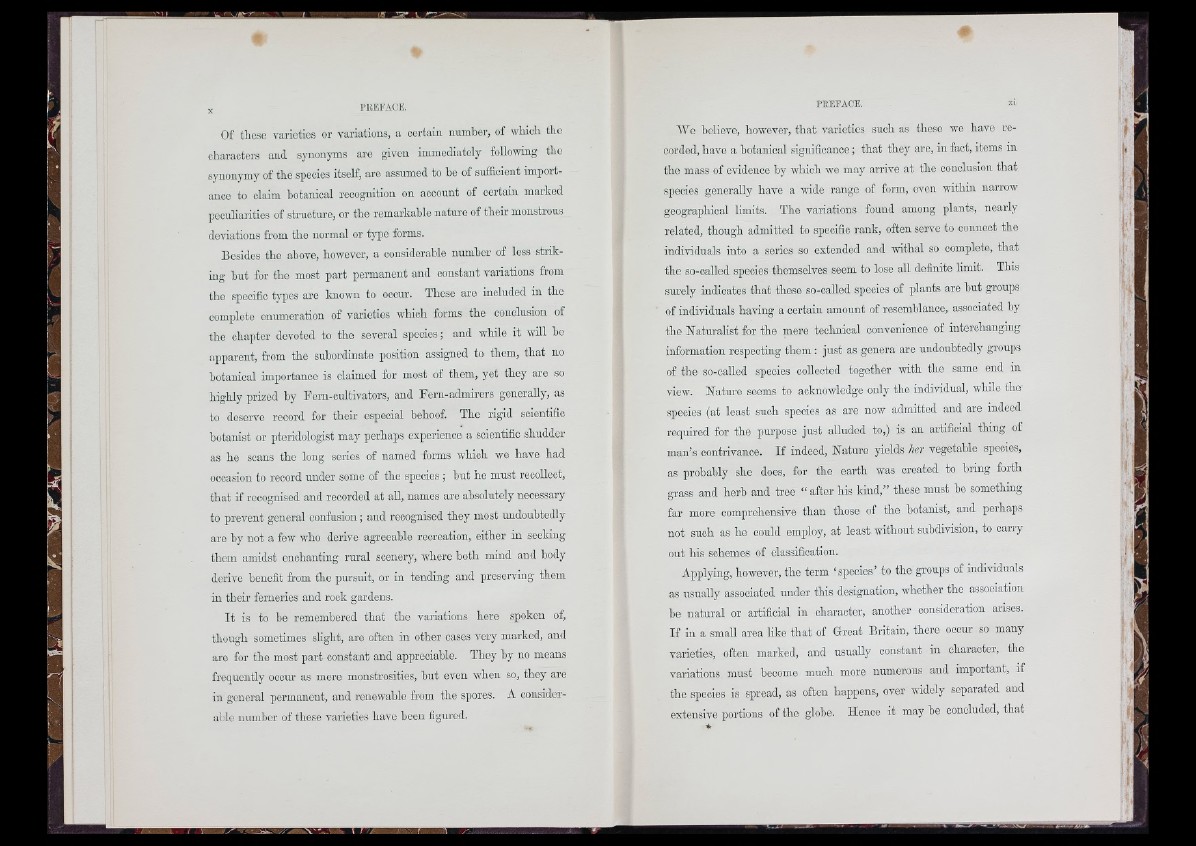
X FKEFACE.
Of those varieties or variations, a certain number, of wliich the
characters and synonyms aro given immediately following tho
synonymy of tho species itself, arc assumed to bo of sufficient importance
to claim botanical recognition on account of certain marked
peculiarities of structure, or the remarkable nature of their monstrous
deviations from the normal or typo forms.
Besides the above, however, a considerable number of less striking
but for tlio most part permanent and constant variations from
tlio specific types ai-e known to occur. These aro included in the
complete onumoration of varieties which forms the conclusion of
tho chapter devoted to the several species; and while it will ho
apparent, from the suhordinato position assigned to them, that no
botanical importance is claimed for most of thorn, yet they are so
highly prized by Forn-cultivators, and Fern-admirers generally, as
to deserve record for their especial behoof. The rigid scientific
botanist or ptoridologist may perhaps oxporienoc a scientific shudder
as he scans tho long series of named forms which we have had
occasion to record under some of the species ; hut he must rocoUect,
that if recognised and recorded at all, names aro absolutely necessary
to prevent general confusion ; and recognised they most undoubtedly
are by not a few who derive agreeable recreation, either in seeking
them amidst enchanting rural scenery, where both mind and body
derive benefit from tho pursuit, or in tending and preserving them
in their ferneries and rock gardens.
I t is to be remembered that tho variations hero spoken ot,
though sometimes slight, aro often in other oases very marked, and
are for the most part constant and appreciable. They by no moans
frequently occur as mero monstrosities, but even when so, they aro
ill general periiianciit, and renewable from the spores. A oonsidor-
ablo number of these varieties have been figured.
PREFACE. Hi
W o holiovo, however, th a t varieties such as those wc have recorded,
have a botanical significance; that they aro, in fact, items in
the mass of evidence by which wo may arrive at tho oonolusion that
species generally have a wide range of form, ovon within narrow
geographical limits. Tho variations found among plants, nearly
related, though admitted to specific rank, often servo to connect the
individuals into a series so extended and withal so complete, that
the so-called species themselves seem to lose all definite limit. This
surely indicates that these so-called species of plants are hut groups
of individuals having a certain amount of rcsemhlanoc, associated by
the Naturalist for the mere technical convenience of interchanging
information respecting th em : just as genera aro undoubtedly groups
of tho so-called species collected together with the same end in
view. Nature seems to acknowledge only the individual, while tho
species (at least such species as arc now admitted and are indeed
required for the purpose just alluded to,) is an artificial thing of
man’s contrivance. I f indeed. Nature yields her vegetable species,
as probably she does, for the earth was created to bring forth
grass and herb and tree “ after his kind,” these must ho something
far more oomprohonsive than those of tho botanist, and perhaps
not such as he could employ, at least without subdivision, to carry
out his schemes of classifloation.
Applying, however, tho term ‘species’ to the groups of individuals
as usually associated under this designation, whether the association
bo natural or artificial in character, another consideration arises.
I f in a small area like th a t of Groat Britain, there occur so many
varieties, often marked, and usually constant in character, tho
variations, must become much more numerous and important, if
the species is spread, as often happens, over widely separated and
extensive portions of the globe. Hence it may he concluded, that
I'-'
1'^
t
ii
, f.
G